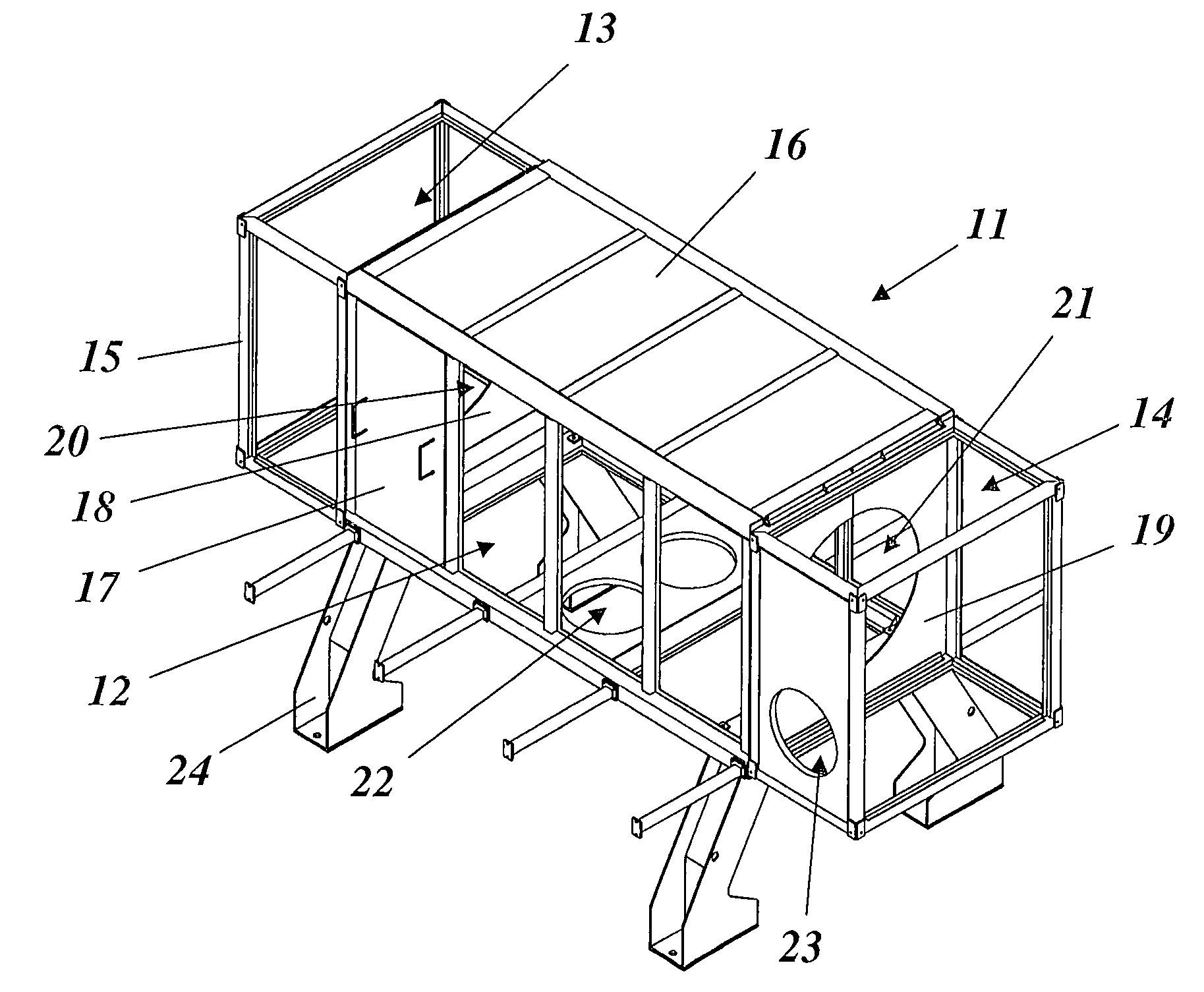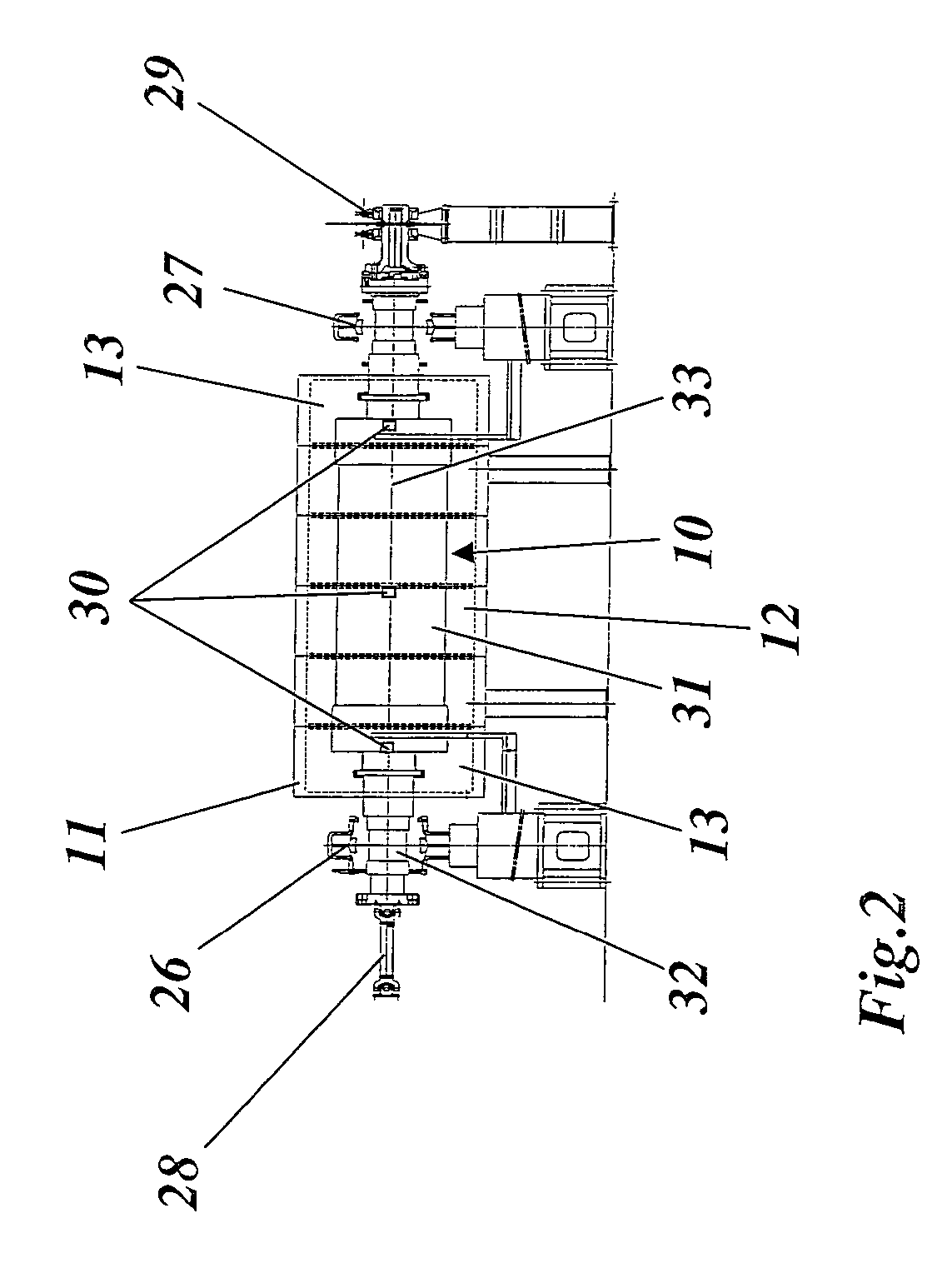Method for testing the thermally induced unbalance of a rotating machine part, in particular the rotor of a turbogenerator, and device for carrying out the method
a technology of rotating machine parts and thermally induced unbalance, which is applied in the direction of dynamo-electric machines, instruments, structural/machine measurement, etc., can solve the problems of thermal unbalance, disproportionate long-term use of methods, and a considerable outlay in the setup of test stands, so as to reduce the outlay
- Summary
- Abstract
- Description
- Claims
- Application Information
AI Technical Summary
Benefits of technology
Problems solved by technology
Method used
Image
Examples
Embodiment Construction
[0031]FIG. 4 reproduces a highly diagrammatic part view of an arrangement for testing for thermally induced unbalance of the rotor of a turbogenerator. Only the left half of the rotor 10, which is constructed essentially symmetrically with respect to a midplane 45, is illustrated. The rotor 10 rotatable about a rotor axis 33 has a continuous rotor shaft 32 and a rotor barrel 31 which is formed in the middle of the rotor shaft 32 and in which the rotor winding 34 is laid in axially running grooves and is secured against the effects of centrifugal forces by means of wedges 35 or by comparable means. According to FIGS. 3 and 4, a cooling medium (air or another gas) flows through the rotor barrel 31 or the rotor winding 34, enters in the axial direction in the usual way on the end faces of the rotor barrel 31 and emerges again in the radial direction on the circumference of the rotor barrel 31 (see the flow arrows in FIGS. 3 and 4). According to FIG. 3, cooling may take place radially i...
PUM
 Login to View More
Login to View More Abstract
Description
Claims
Application Information
 Login to View More
Login to View More - R&D
- Intellectual Property
- Life Sciences
- Materials
- Tech Scout
- Unparalleled Data Quality
- Higher Quality Content
- 60% Fewer Hallucinations
Browse by: Latest US Patents, China's latest patents, Technical Efficacy Thesaurus, Application Domain, Technology Topic, Popular Technical Reports.
© 2025 PatSnap. All rights reserved.Legal|Privacy policy|Modern Slavery Act Transparency Statement|Sitemap|About US| Contact US: help@patsnap.com



